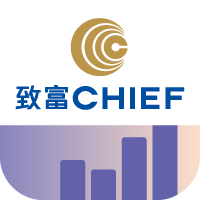Introduction of leveraged and inverse products
Leveraged and inverse products (L&I Products) are derivative products structured as funds. Unlike traditional index tracking exchange traded funds (ETF), L&I Products are often referred to as "daily" products since they aim to deliver a multiple or the opposite of the return of the underlying index on a daily basis only. Leveraged products seek to deliver a daily return equivalent to a multiple of the underlying index return. For example, when an investor buys a two-time leveraged product, and the underlying index moves up by 10% on a given day, the two-time leveraged product should deliver a gain of 20% on that day. While inverse products seek to deliver the opposite of the daily return of the underlying index. For example, when an investor buys a one-time inverse product, and the underlying index moves up by 10% on a given day, the inverse product should deliver a loss of 10% on that day.
Major risks
| Item | Risk |
|---|---|
| Investment risk | The risk investment results of products are the opposite of traditional investment funds. If the product moves in an unfavorable direction, the product you invest in is likely to lose most or all of its value. |
| Leverage risk | The use of leverage will magnify both gains and losses of leveraged products resulting from changes in the underlying index or, where the underlying index is denominated in a currency other than the leveraged product's base currency, from fluctuations in exchange rates. |
| Passive investments risks | • The Product is not “actively managed” and therefore the Manager will not have discretion to adapt to market changes when the Index moves in an unfavorable direction to the Product. In such circumstances the Product will also decrease in value. |
| Tracking error | Due to fees, expenses, transaction costs as well as costs of using financial derivatives, liquidity of the market and the investment strategy adopted by the Manager, the correlation between the performance of the Product and the Daily inverse performance of the Index may reduce. |
| Liquidity risk | Rebalancing typically takes place near the end of a trading day (shortly before the close of the underlying market) to minimize tracking difference. The short interval of rebalancing may expose L&I Products more to market volatility and higher liquidity risk. |
| Long-term holding risk | Leveraged and inverse products are not intended for holding longer than the rebalancing interval, typically one day. Daily rebalancing and the compounding effect will make the L&I Product's performance over a period longer than one day deviate in amount and possibly direction from the leveraged/inverse performance of the underlying index over the same period. The deviation becomes more pronounced in a volatile market. As a result of daily rebalancing, the underlying index's volatility and the effects of compounding of each day's return over time, it is possible that the leveraged product will lose money over time while the underlying index increases or is flat. Likewise, it is possible that the inverse product will lose money over time while the underlying index decreases or is flat. |
| Risk of rebalancing activities | There is no assurance that L&I Products can rebalance their portfolios on a daily basis to achieve their investment objectives. Market disruption, regulatory restrictions or extreme market volatility may adversely affect the rebalancing activities. |
| Portfolio turnover risk | Daily rebalancing causes a higher levels of portfolio transaction when compared to conventional ETFs, and thus increases brokerage and other transaction costs. |
| Correlation risk | Fees, expenses, transactions cost as well as costs of using financial derivatives may reduce the correlation between the performance of the L&I Product and the leveraged/inverse performance of the underlying index on a daily basis. |






